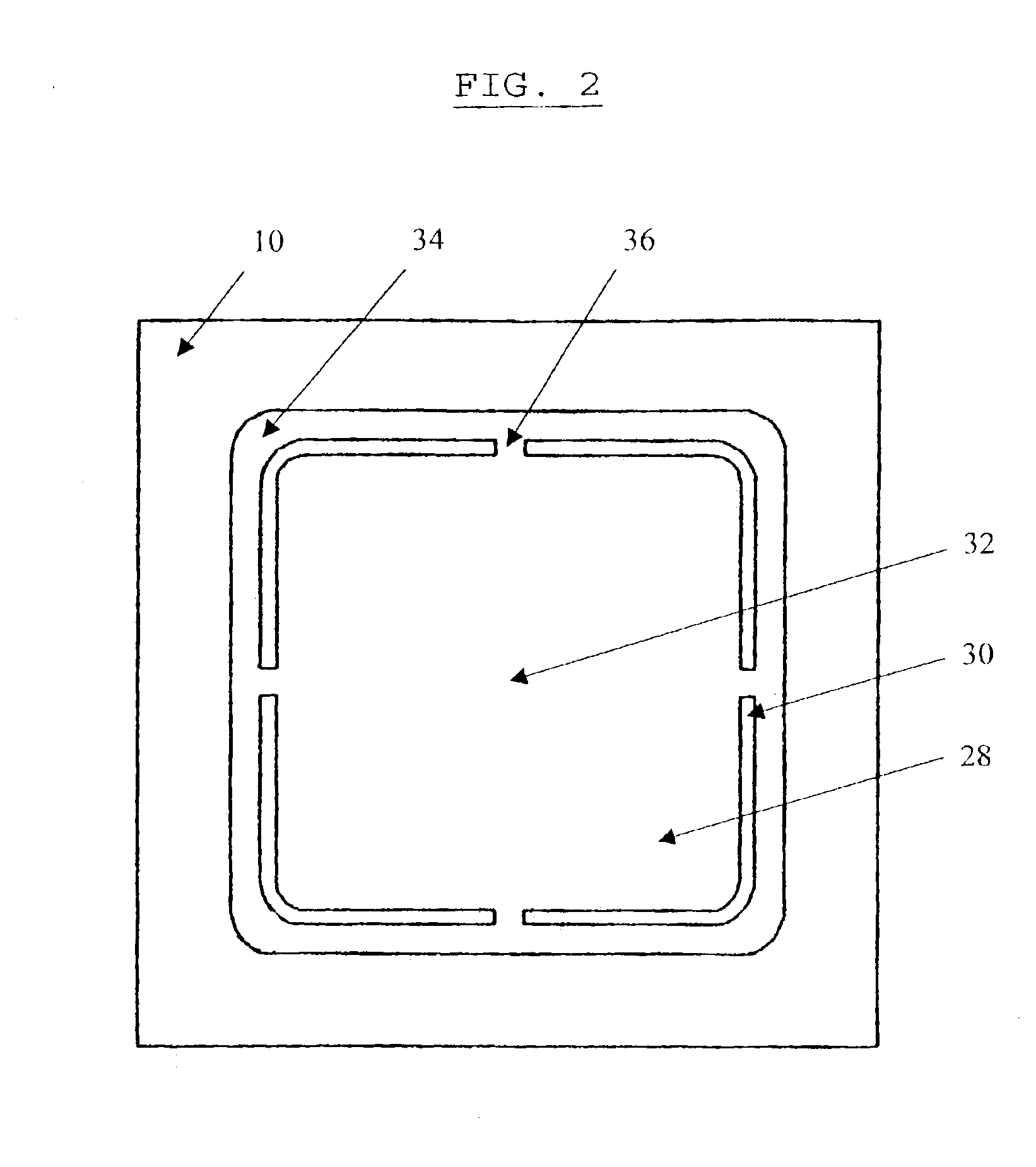Integrated heat spreader lid
- Summary
- Abstract
- Description
- Claims
- Application Information
AI Technical Summary
Problems solved by technology
Method used
Image
Examples
Embodiment Construction
[0018]Disclosed is a heat spreader for electronic circuit components. Referring to FIG. 1, a semiconductor package is comprised of a substrate 10, a die 12, and an optional thermal interface material 14. A heat spreader lid 16 is bonded to substrate board 10 via bonding layer 18, and the lid 16 is thermally coupled to the die 12 via thermal interface material 14. Thermal interface material 14 is optional; the required thermal coupling can be accomplished either by direct physical contact of the lid with the underlying electronic component or via physical contact of the lid with a thermal interface material that transfers heat from the underlying electronic component. Many thermally conductive materials are suitable for use as thermal interface material. Typical thermal interface materials include silicone or polymer based adhesives doped with aluminum, silver, boron nitride, or aluminum nitride. Typical thermal interface materials also include lead, gold, or tin solder utilized in a...
PUM
 Login to View More
Login to View More Abstract
Description
Claims
Application Information
 Login to View More
Login to View More - R&D
- Intellectual Property
- Life Sciences
- Materials
- Tech Scout
- Unparalleled Data Quality
- Higher Quality Content
- 60% Fewer Hallucinations
Browse by: Latest US Patents, China's latest patents, Technical Efficacy Thesaurus, Application Domain, Technology Topic, Popular Technical Reports.
© 2025 PatSnap. All rights reserved.Legal|Privacy policy|Modern Slavery Act Transparency Statement|Sitemap|About US| Contact US: help@patsnap.com



